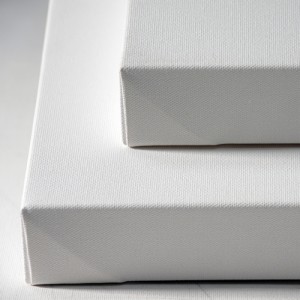How the Masters Prime a Canvas
Other than to a few brilliant iconoclasts, such as Jackson Pollock, an unprimed canvas really isn’t of much use to anyone. Your paint won’t stick right, the rough texture of the weave gives an awkward and uncomfortable brushing experience, and the whole thing is likely to just fall apart at some point in the future. Because of these issues and more, experienced canvas producers such as Canvas Lot provide you with pre-primed canvas that makes creating your masterwork a breeze.

We’ve told you what primer is in a previous post, but how exactly is it used? What magic process is involved in priming? Priming techniques are no mystery, but it is an incredibly picky and sometimes difficult process that most artists prefer to leave to the experts. To give you a little information on how this important, if delicate, process works, here’s an overview of the two main priming techniques.
Old School Priming -or- Priming for Oil
Priming a canvas to be ready for oil paints is a seriously old process, dating back to the 1400’s when canvas began to take over as the dominant painting surface. Though there are many ways to do it, we’re going to tell you how Fredrix, the makers of the canvas material for Canvas Lot, still do their oil priming, which is by hand.
To begin, a large piece of raw woven canvas is carefully stretched over a special frame that has little spikes at the edge, to which the canvas is attached. This is a very specific part of the process, and experienced primers know exactly how much to stretch each part so that it’s neither too slack or too tight. This might seem like a less important part of the whole thing, but it’s not, as any mistakes will ruin the whole canvas later in the process.
After it’s stretched, the canvas is inspected and any aberrations in the weave are fixed with special tools. There are usually a few, and it takes a master to fix these by hand.
Next, the rough canvas is sanded down with pumice stone, to make it a smoother surface. This leaves a fine dust of pumice and canvas bits on the surface, but they can’t simply be wiped off, or it will damage the canvas. Instead, the dust is bounced off the canvas by the priming team by slapping it lightly with special tools.
Once this is complete, the primers grind up the animal glue in a meat grinder. The ground glue is then laid on the canvas and spread in a very precise manner with long “knives,” tools that look like ultra-huge painter’s palette knives. This has to be done in a very specific way, or the glue will dry incorrectly.
After this, the primers make sure the glue is equally spread, and then they let it dry. When it’s dry, which takes many hours, they inspect it again and then begin to mix the gesso (or primer). They then apply the gesso with the same knives that were used to spread the glue, and again, it must be very specific.
The gesso is then left to dry, and another layer is applied on top of it. This process is repeated until the desired level of smoothness is achieved, and sometimes the layers are sanded before another is laid down. The final layer is never sanded, however, and after a final inspection, the canvas is ready to go.
Quick, Modern Priming
To apply a modern primer, the process is almost exactly the same as the old method, just minus a few steps. These new primers come premixed and can be applied directly to a canvas with a brush, alleviating the need for glue, knives or other special tools. Modern primers are usually created to work well with both oil and acrylic paint, though the old school method is always better for oil, as the animal glue bonds best with oil paint. Sanding can be done between layers of modern primer, and again, the last layer is always un-sanded. Modern primers are essentially made to make priming a quicker, easier and more accessible process for the artist, but it still takes years to master the process, even with recent advancements. Without knowing exactly what you’re doing, it’s very easy to ruin an expensive canvas in a variety of ways, including priming it in-equally, leaving bumps and putting too much or too little primer on the surface. Additionally, much canvas priming in the modern way is done with exact machines, which produce an unbeatable and perfect level of priming that is incredibly hard to match by hand.

And there you have it: the old and venerated process of priming a canvas to be painted. While learning to prime a canvas can be a fun and interesting journey, for most artists, it’s simply too much trouble, time and cost to be worth the experience. When you’re ready to paint, you’re ready, and you want a canvas that’s already perfectly set up, waiting for your creation to take life. Take our word for it, and unless you’re willing to put in countless hours and a large amount of money into becoming a master primer, let us take the burden off your shoulders. So if you’re considering priming your own canvas to save money, consider this: We’ll provide you with gorgeous, perfectly primed canvases, and we’ll do it at a fraction of the cost that it would cost you to prime your own. And that’s quality that just can’t be bested!